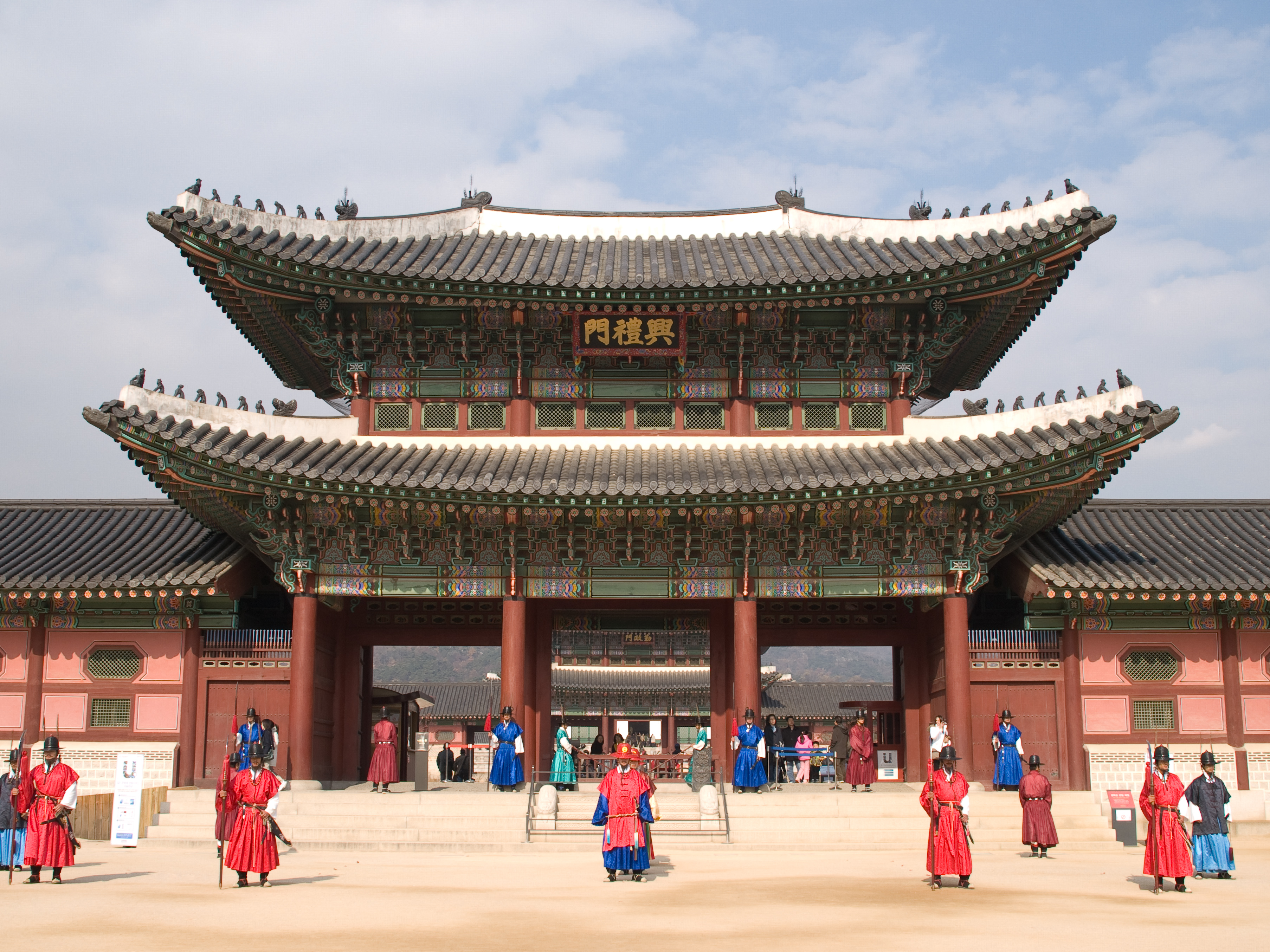- Gyeongbokgung
caption=The changing of the guard ceremony at Gyeongbok Palace.
hangul=경복궁
hanja=景福宮
rr=Gyeongbokgung
mr=KyŏngbokkungGyeongbok Palace (경복궁, "Gyeongbokgung") is a palace located in northern
Seoul ,South Korea . It was the main and largest palace of theJoseon Dynasty and one of the "Five Grand Palaces " built by theJoseon Dynasty .History
The palace was originally constructed in 1394 by
King Taejo and "Gyeongbokgung" was named by ministerJeong Do-jeon . Gyeongbokgung was continuously expanded during the reign of King Taejong and King Sejong the Great, but part of the palace was burnt down during theJapanese invasions of Korea (1592-1598) .During the regency of
Daewon-gun in 1867, the buildings were reconstructed and formed a massive 330-building complex with 5,792 rooms. Standing on 4,414,000 square feet (410,000 square meters) of land, it was a symbol of majesty for the Korean people and the home of the royal family. In 1895, after the assassination ofEmpress Myeongseong by Japanese agents, her husband, Emperor Gojong left the palace and the imperial family would never return.In 1911, the government of
Japan demolished all but 10 buildings during the period of Japanese occupation, constructing the Japanese General Government Building for theGovernor-General of Korea in front of the throne hall.At the end of the Second World War, major buildings on the site included Geunjeongjeon, the Imperial throne room (national treasure number 223), and Gyeonghoeru Pavilion (national treasure number 224), which stands in an artificial lotus lake, resting on 48 granite pillars. The pavilion is depicted on the 10,000
won Korean banknotes.Today the palace is open to the public, and houses the
National Folk Museum of Korea . TheNational Museum of Korea was there too, until it was relocated toYongsan-gu in 2005.Archaeological work has brought 330 building foundations to light. The main gate to the palace, called
Gwanghwamun , is now being restored to its original state, to be completed in 2009.The Blue House
The back garden of the palace used to contain the main part of the Governor-General's residence during the Japanese era. With the establishment of the Republic of Korea in 1948, President
Syngman Rhee used it as his office and residence. In 1993, after PresidentKim Young-sam 's civilian administration was launched, the Japanese governor-general's residence in the Cheong Wa Dae compound was dismantled to remove a major symbol of the Japanese colonial occupation.Gallery
ee also
*
Gwanghwamun
*Gyeongbokgung Station
*National Folk Museum of Korea
*List of Korea-related topics
*History of Korea
*Korean architecture External links
* [http://www.cha.go.kr/english/royal_palaces/Gyeongbokgung.jsp?catmenu=ES_04_04 Official guide from Cultural Heritage Administration]
* [http://www.lifeinkorea.com/Travel2/seoul/66 Gyeongbok Palace]
* [http://english.president.go.kr/warp/en/tour/places/sugungto.php Official Blue House history summary]
* [http://blmtseoul.com.ne.kr/KBK/KBK-Index.htm 영이]
* [http://www.andycarvin.com/archives/2005/06/royal_gate_cere.html Video of Royal Gate Ceremony, Gyeongbokgung]
* [http://www.jennyhouse.info/korea The Architecture and Skyscraper Community of Korea (English translated)]
* [http://labs.live.com/photosynth/view.html?collection=sanmarco/index1.sxs Photosynth view of Gyeongbokgung showing the palace and surrounding areas in three-dimensional space (plugin required)]
Wikimedia Foundation. 2010.

